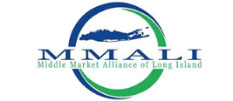
16 Dec How Tariffs Impact Transfer Pricing
Recent trade tensions between the United States and its trading partners in Asia and Europe have resulted in the U.S. government enacting import tariffs on a broad list of goods. In a retaliatory measure, a number of these trading partners implemented their own tariffs—adding to an increasingly complex and hostile international trade environment.
Due to the lack of recent experience with escalating trade disputes resulting in tariff regimes, multinationals must be prepared to deal with the transfer pricing implications associated with the tariffs, which may have an immediate and material impact on their intercompany pricing.
To better understand the interaction between tariffs and transfer pricing, let’s start with a basic definition of what is commonly understood to be a “tariff” on tangible goods. A tariff, also called a customs duty, is a tax on a certain class of imports. In the U.S., tariffs are levied at the time of import and paid by the importer of record. The tariff rate varies depending on the product classification, which is pursuant to the Harmonized Tariff Schedule of the United States and by its country of origin. Companies typically account for the cost of the tariff as part of the imported product’s cost in cost of goods sold (“COGS”).
Thus, the key question is which related party bears the cost of the tariff or the tariff risk. Based on the tariff rules, the importer of record bears initial responsibility for the tariff, and tariff costs ultimately become part of the importer’s COGS. Unlike anti-dumping rules, no rule prevents the parties from contractually allocating the tariff costs in whole or in part among the parties to the transaction. In other words, the tariff risk can be contractually assigned between the parties, and if the parties are related, the resulting arrangement must be at arm’s length.
Assigning tariff risk, however, is not the only important consideration. Tariffs can impact comparability and the validity of the benchmarking results intended to demonstrate the arm’s-length nature of a tested transaction impacted by tariffs.
For example, comparability can be compromised when the tested party for transfer pricing purposes is exposed to the new tariffs and the comparables are not. In such a scenario, adjustments to the arm’s-length range may be appropriate to restore comparability. Such potential adjustments are often difficult to quantify because detailed financial and transactional information on the comparables (e.g., country of origin of products purchased for resale) is simply not available.
Multinationals need to review a number of big-picture issues by analyzing the impact of newly imposed tariffs on their existing transfer pricing regime. First, it may be difficult to quantify any necessary adjustments to arms-length transfer pricing because detailed, up-to-date financial information of the comparables is not available. Second, other countries may join the escalating trade dispute and could decide to enact tariffs as part of protectionist trade policy, thereby adding further complexity to the transfer pricing analysis. Third, each affected transaction between related entities will need to be individually examined and adjusted, and each adjustment will require further recalibration and harmonization with the remaining tested transactions. Lastly, without a pre-existing advance pricing agreement (“APA”) between related entities, the tariff cost might be absorbed by the importer and cause a reduction in their profits, rather than the price changes being passed on to the customer. For those transfers that already have an APA, each individual case needs to be reviewed for the tariff impact and appropriate treatment under existing APA language.
A detailed analysis of the each transaction is necessary to understand how tariffs impact the transfer price and whether an adjustment is possible or even necessary. Each analysis will be unique and vary in complexity as well as require a high level of documentation. Proper documentation of transfer pricing adjustments can pave the way for eligibility for potential tariff refunds, while complying with U.S. Customs and Border Protection rules and IRS regulations. Due to the complexity of this issue, we strongly suggest consultation with your business advisor.
Written by Henric Adey, Transfer Pricing Practice Leader at EisnerAmper.
To learn more, contact Eric Altstadter, Partner, EisnerAmper by emailing [email protected] or calling 212.891.4058 or 516.864.8888.
This article is a republication of content originally published by EisnerAmper, https://www.eisneramper.com/tariffs-impact-transfer-pricing-tp-blog-1119/, used with permission.
This article is for general information and education only. It is provided as a courtesy to the clients and friends of EisnerAmper. EisnerAmper does not warrant that it is accurate or complete. Opinions expressed and estimates or projections given are those of the authors or persons quoted as of the date of the article with no obligation to update or notify of inaccuracy or change. This article may not be reproduced, distributed or further published by any person without the written consent of EisnerAmper. Please cite source when quoting.



Sorry, the comment form is closed at this time.